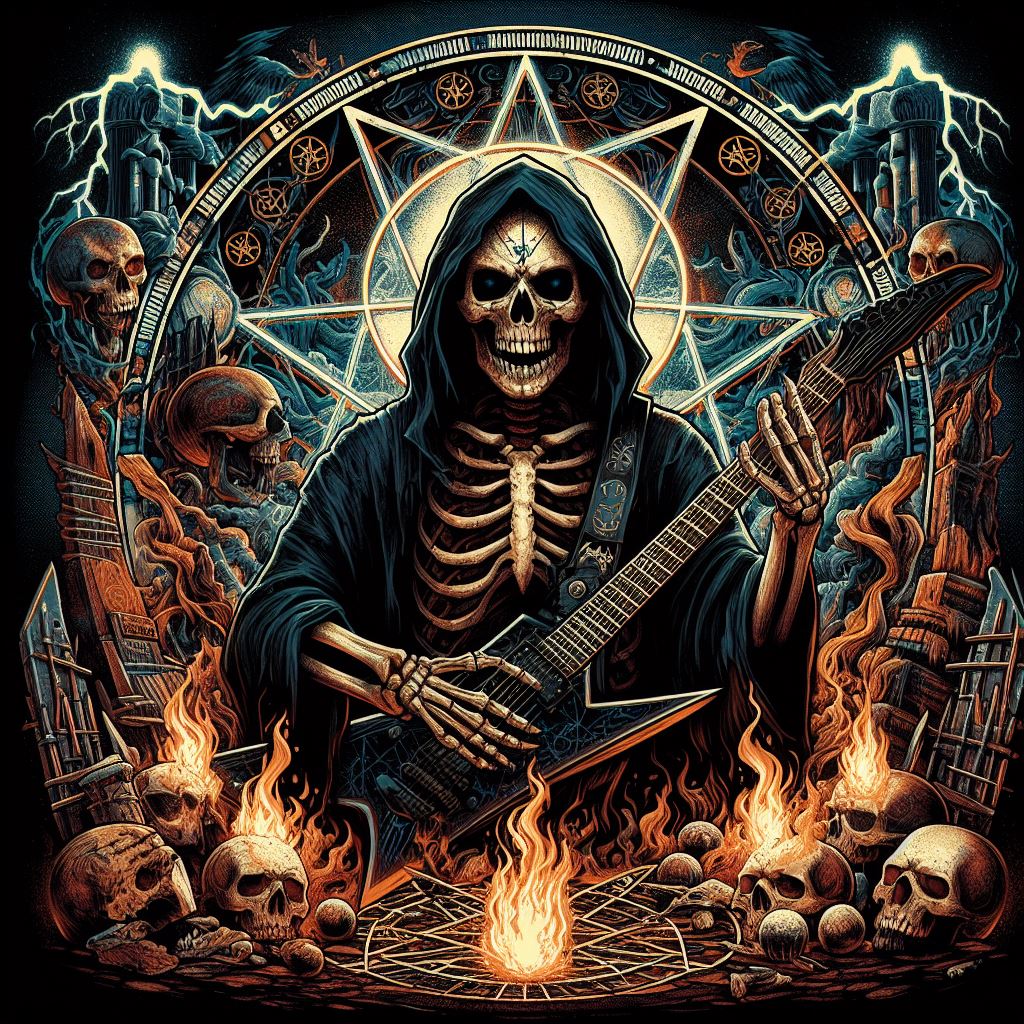Kamelot, a name synonymous with soaring vocals, epic storytelling, and powerful riffs, has carved its place as a titan in the world of symphonic metal. Their journey, spanning over three decades, is a tale of evolution, iconic collaborations, and a relentless pursuit of musical innovation.
Early Days and First Steps (1987-1997)
The seeds of Kamelot were sown in sunny Tampa, Florida, in 1987. Guitarist Thomas Youngblood, the band’s sole remaining founding member, envisioned a project initially called “Camelot.” However, a local record store of the same name prompted a name change to Kamelot, subtly distancing themselves from the Arthurian legend while retaining a touch of grandeur.
The early Kamelot lineup saw frequent changes, with Youngblood remaining the constant driving force. Their first demo, recorded in 1991, marked a significant step forward. Soon after, David Pavlicko joined on keyboards, solidifying the band’s core sound. In 1993, they landed a deal with Noise Records and released their debut album, “Eternity,” in 1995. While rooted in traditional power metal, the album showcased their potential for intricate arrangements and soaring vocals.
The follow-up, “Dominion” (1997), displayed further growth, with a heavier sound and more progressive elements. However, this period also saw a shift in personnel. Drummer Richard Warner and vocalist Mark Vanderbilt departed, paving the way for a new chapter.
The Roy Khan Era: A Golden Age of Symphonic Metal (1997-2011)
The arrival of Norwegian vocalist Roy Khan in 1997 proved to be a turning point. Khan’s operatic vocals and masterful songwriting prowess elevated Kamelot to a whole new level. Their third album, “Siege Perilous” (1997), marked the beginning of a fruitful partnership between Khan and Youngblood. The album embraced a more symphonic approach, incorporating orchestral arrangements and keyboards more prominently.
The band’s sound continued to refine with each subsequent release. “The Fourth Legacy” (1999) boasted a more cinematic soundscape, while “Karma” (2001) further explored progressive elements. However, it was the concept albums “Epica” (2003) and its follow-up, “The Black Halo” (2005), that truly cemented Kamelot’s legacy.
Inspired by Johann Wolfgang von Goethe’s Faust, these albums weaved intricate narratives with powerful music, establishing Kamelot as masters of symphonic storytelling. Songs like “The Shadow of the Wind” and “March of Mephisto” became instant classics, showcasing the band’s ability to blend musical dexterity with emotional depth. This era also saw Kamelot gain international recognition, with extensive touring solidifying their fanbase.
A New Voice and Continued Success (2011-Present)
In 2011, Roy Khan’s departure sent shockwaves through the metal community. However, Kamelot persevered, recruiting Swedish vocalist Tommy Karevik (previously featured as a guest vocalist) as his replacement. Karevik brought a different vocal style, with a more aggressive edge that complemented Kamelot’s evolving sound.
Albums like “Silverthorn” (2012) and “Haven” (2015) showcased their ability to adapt without losing their identity. Kamelot continued to experiment, incorporating more electronic elements and modern production techniques, while retaining their core strengths. Their latest release, “The Awakening” (2023), marked a return to their classic sound, with a renewed focus on melody and storytelling.
Kamelot’s Legacy: A Beacon of Innovation
Kamelot’s influence on the metal scene is undeniable. They are pioneers of symphonic metal, blending the power and energy of traditional metal with the grandeur of orchestral arrangements and intricate songwriting. Their concept albums have captivated audiences, while their live performances are renowned for their energy and theatricality.
Through lineup changes and stylistic evolutions, Kamelot has remained a force to be reckoned with. With their unwavering dedication to pushing boundaries and captivating storytelling, they continue to inspire legions of fans worldwide. As they embark on the next chapter of their musical journey, Kamelot’s legacy as a leading force in symphonic metal remains secure.

Leave a Reply
You must be logged in to post a comment.